Description
A perennial diffuse herb that consists of creeping stem that is usually purple in color. The plant is about 0.75-1m in length. Occasionally it grows up to 4mtrs in rainy seasons and dries in summer.
Leaves are usually whitish and smooth underneath and rough green on upper surface which are 2.5-4cm long, fleshy with soft hairs, whitish ventrally. Flowers are small, pink colored. Fruits are one seeded nuts which are round or circular, about 1cm long, containing seeds like cow’s beans. Root are fairly long, somewhat circular and yellowish brown to brown colored, surface is twisted on drying. It is soft to touch but rough due to minute longitudinal markings and root scars, fracture and short. Flowering and fruiting of plant during winter.
General Description
Punarnava (Boerhavia diffusa) is rightly called so as it can brings back missing vigor and vitality. It is a brilliant natural diuretic and very important herb for urinary system. This herb can be white or red. It has been used since long times for the treatment of liver disorders such as jaundice and hepatitis. Throughout the tropical region, it is used as a natural remedy for guinea worms.
Boerhavia diffusa has important property as of being an anti-inflammatory, hepatoprotective & diuretic agent.
Chemical composition of Punarnava consists of b-Sitosterol, a-2-sitosterol, palmitic acid, ester of b-sitosterol, hentriacontane, tetracosanoic, hexacosonoic, stearic, arachidic acid, urosilic acid, b-Ecdysone, triacontanol etc.
Classification
- Kingdom – Plantae
- Division – Magnoliophyta
- Class – Magnoliopsida
- Order – Caryophyllales
- Family – Nyctaginaceae
- Genus – Boerhavia
- Species – Diffusa
Habitat
It is found in Australia, Pakistan, Sudan, Sri Lanka, South Africa, Brazil and USA, in several countries of the Middle East and in Myanmar, China, and India. Boerhavia diffusa is also indigenous herb to India and found all over the warmer parts of the country up to an altitude of 2000 m in the Himalayan region
Ayurvedic Properties
| Hindi / Sanskrit | English | ||
| Rasa | Madhura, Tikta, Kashaya | Taste | Sweet, Bitter, Astringent |
| Guna | Laghu, Rooksha | Physical Property | Light, Dry |
| Virya | Ushna | Potency | Hot |
| Vipaka | Katu | Metabolic Property (After Digestion) | Pungent |
Effects On Doshas
It balances Pitta and Kapha doshas.
| Charak Samhita | Sushrut Samhita |
| · Vayahsthapana – Anti-aging group of herbs
· Kasahara – Useful against cough · Anuvasanopaga – Group of herbs useful in oil enema · Svedopaga – Useful in sweating treatment · Madhurskanda – Group of herb with sweet taste. |
· Vidarigandhadi Gana |
Practical Uses Of Boerhavia Diffusa
- Punarnava herb possess diuretic, anti-inflammatory, anti-oxidative, anti-arthritic, spasmolytic, antibacterial, analgesic, immunity booster and anti-ageing properties.
- It is beneficial in arthritis as it reduces inflammation and pain in joints.
This herb is used in treating all the disorder of the kidneys as it can very efficiently decreases the urea levels in the body. - Punarnava is good to treat impotence and can enhance (libido, erection, quality and quantity of semen).
- It acts as a carminative, increases appetite, reduces abdominal pain & relieve constipation too.
- This is an herbal agent in reducing productive cough and asthma.
- Punarnava herb shows good result in skin diseases like scabies and it is a brilliant natural remedy for guinea worms.
- This herb is used in combination with other herbal ingredients to treat anemia.
- It is used for renal calculi (kidney stone), cystitis and nephritis.
- Punarnava is extensively used to rejuvenate liver and detoxify it.
- The herb give effective result in jaundice or hepatitis.
- Boerhavia diffusa is a potent herb in Ayurvedic preparations for menorrhagia.
- It has ability to rejuvenate whole body and health as it strengthens the body and normalizes doshas.
Part Used
- Whole Plant
- Root
- Leaf
Dosage
- Whole plant: 20-30g for decoction
- Root: 1-3 g powder; 10-20ml fresh juice


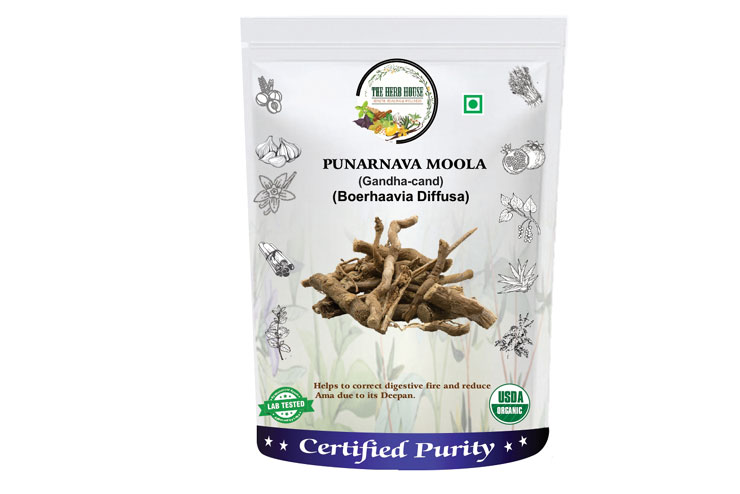
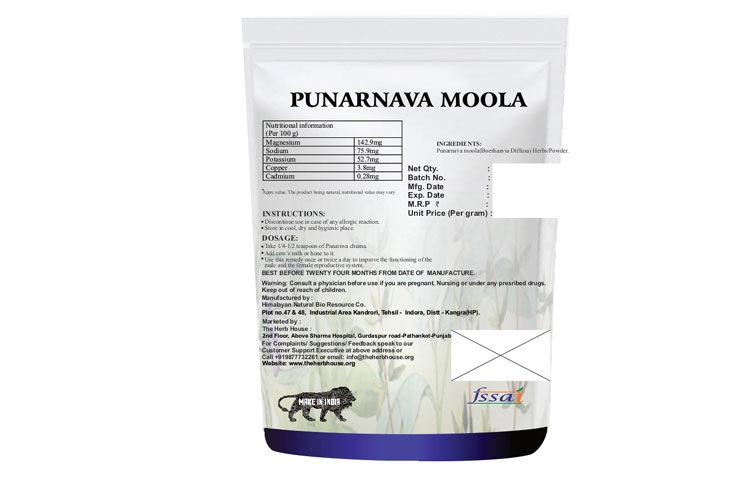
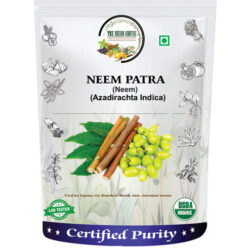
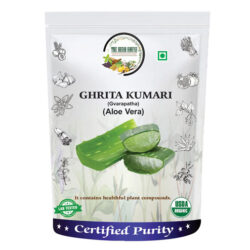
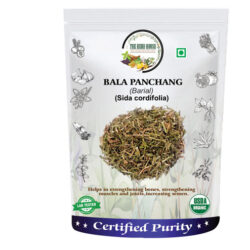
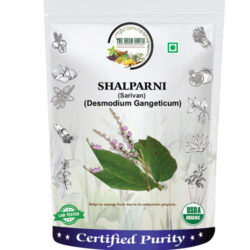
Reviews
There are no reviews yet.